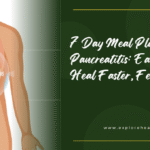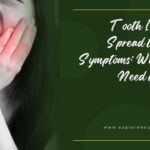For anyone living with trigeminal neuralgia, even something as simple as brushing your teeth or feeling a light breeze can trigger excruciating facial pain. Known as one of the most painful conditions affecting the cranial nerves, trigeminal neuralgia (TN) is often hard to manage and deeply affects quality of life. While medications, surgeries, and nerve blocks are the mainstays of treatment, there’s increasing curiosity about how diet — including specific foods like bananas — may influence symptoms.
Could there be a link between bananas and trigeminal neuralgia relief? While bananas aren’t a cure, this article explores the science and stories behind this humble fruit and its possible role in managing nerve pain.
What Is Trigeminal Neuralgia?
Trigeminal neuralgia is a chronic pain disorder affecting the trigeminal nerve, which carries sensation from your face to your brain. It causes sudden, severe, shock-like pain on one side of the face — often around the jaw, cheek, or eye. The pain can be triggered by seemingly harmless activities like:
- Talking or chewing
- Washing your face
- Exposure to wind or cold air
- Applying makeup or shaving
It’s estimated that around 150,000 people are diagnosed with TN each year in the U.S., with women and individuals over 50 most commonly affected.
In 2024 and 2025, there has been a growing interest in non-pharmacological approaches to support TN treatment, including dietary adjustments.
Bananas and Trigeminal Neuralgia: Is There a Link?
You might be wondering: What do bananas have to do with nerve pain?
Bananas are known for being rich in vitamin B6, magnesium, and potassium — all nutrients that play a role in nerve function and inflammation control. While no major clinical trials have studied bananas specifically for trigeminal neuralgia, some nutritional components in bananas may indirectly help reduce nerve-related discomfort.
Nutritional Highlights of Bananas:
- Vitamin B6 (Pyridoxine): Supports nerve health and may help reduce neuropathic pain symptoms. According to the National Institutes of Health, vitamin B6 deficiency can lead to nerve irritation or damage.
- Magnesium: Known to help relax nerves and muscles and reduce inflammation.
- Potassium: Important for maintaining healthy nerve signal transmission.
- Tryptophan: A precursor to serotonin, which can influence how we perceive pain and stress.
Although bananas alone won’t treat trigeminal neuralgia, adding them to your diet could support overall nerve health, especially when paired with a nutrient-rich, anti-inflammatory eating plan.
Understanding Trigeminal Neuralgia and Nutritional Support
Managing TN often involves a multifaceted approach, including medication (like anticonvulsants), surgery (e.g., microvascular decompression), and sometimes complementary therapies.
In recent years, researchers and neurologists have looked into nutritional strategies to help manage chronic nerve pain conditions. While the clinical data is still growing, several studies suggest that a nutrient-dense, low-inflammatory diet may help reduce the frequency or severity of flare-ups.
Foods That May Support Nerve Health:
- Leafy greens (rich in folate and antioxidants)
- Fatty fish (omega-3s reduce inflammation)
- Nuts and seeds (magnesium and healthy fats)
- Whole grains (B vitamins)
- Bananas (as a quick, easy source of nerve-supportive nutrients)
A 2023 review in Neurology Today reported that patients with trigeminal neuralgia and other neuropathic pain conditions often report fewer symptoms when following a Mediterranean-style diet, which includes bananas, legumes, healthy fats, and lean proteins.
Can Certain Foods Worsen Trigeminal Neuralgia?
Just as some foods may support nerve function, others can worsen inflammation or increase nerve sensitivity. In TN forums and support groups, patients frequently report pain flare-ups after consuming:
- Highly processed foods
- Sugar-heavy snacks
- Alcohol
- Caffeine
- Foods high in tyramine (aged cheeses, cured meats)
Bananas contain moderate levels of tyramine, but for most people, especially when eaten in moderation, they’re not a trigger. However, if you notice consistent symptoms after eating bananas, it’s worth discussing with your doctor or keeping a food journal.
Bananas as Part of a Holistic Approach to TN
No single food or vitamin can replace medical treatment for trigeminal neuralgia. However, a well-rounded, supportive diet can enhance the effectiveness of other treatments and improve overall quality of life.
Here’s how you can incorporate bananas into a TN-friendly lifestyle:
Daily Tips:
- Add sliced banana to a morning oatmeal or smoothie for sustained energy.
- Pair bananas with magnesium-rich nuts like almonds or cashews for a double boost.
- Freeze banana chunks as a soft, gentle snack that’s easy on sensitive areas of the mouth.
- Combine with Greek yogurt or plant-based alternatives for extra protein and probiotics.
What U.S. Experts Are Saying in 2025
As of mid-2025, neurologists in the U.S. are increasingly acknowledging the role of dietary and lifestyle factors in managing chronic nerve conditions like TN. The American Academy of Neurology (AAN) has launched new patient education initiatives on nutrition and nerve health, emphasizing the benefits of vitamins B6 and B12, magnesium, and anti-inflammatory foods.
The National Institute of Neurological Disorders and Stroke (NINDS) has also updated its patient guides to reflect emerging research on holistic management options, highlighting that nutrition may play a supportive, adjunct role alongside conventional TN treatments (NINDS.gov).
When to Talk to Your Doctor
If you’re considering dietary changes to manage trigeminal neuralgia, especially involving supplements or high doses of vitamins like B6, it’s important to consult your healthcare provider. High doses of certain vitamins can cause side effects or interact with medications like carbamazepine or oxcarbazepine.
Real Patient Stories
Some TN patients in the U.S. have reported mild symptom relief when switching to an anti-inflammatory diet that includes bananas and other nerve-supportive foods. While these stories are anecdotal, they echo the growing interest in nutrition-based strategies as part of comprehensive TN care.
“I started adding bananas and magnesium-rich foods to my diet while staying away from processed sugars,” says Marie T., a 52-year-old TN patient from Colorado. “I still take medication, but the attacks feel less intense, and I feel more in control of my body.”
Conclusion: Bananas and Trigeminal Neuralgia – A Natural Ally?
While bananas won’t cure trigeminal neuralgia, they’re a nutrient-rich food that supports overall nerve health, reduces inflammation, and fits well into a TN-friendly diet. As U.S. experts in 2025 continue to explore holistic and integrative care models, paying attention to what you eat — including the humble banana — may play a small but helpful role in managing this painful condition.
Take the First Step Toward Better Nerve Health
If you’re living with trigeminal neuralgia, consider reviewing your diet with a healthcare professional or a registered dietitian. Adding foods like bananas, leafy greens, and healthy fats could support your treatment plan and help reduce symptoms over time. Don’t underestimate the power of small changes — they can make a big difference in how you feel.
About ExploreHealthToday.com
ExploreHealthToday.com was created to be a one-stop resource where readers can find up-to-date, well-researched articles on a variety of health topics. From nutrition and wellness to lifestyle and mental health, we strive to provide reliable information to help you make informed decisions about your well-being.
We believe that good health starts with good information, and our mission is to empower our readers with knowledge they can trust.
Visit us at ExploreHealthToday.com to learn more.





